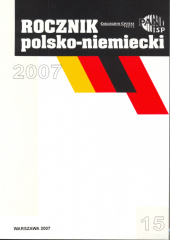Mit Europy i jego transformacje w XX wieku
The European myth and its transformation in the 20 century
Author(s): Beata Di BiasioSubject(s): Cultural history
Published by: Instytut Studiów Politycznych PAN
Summary/Abstract: The exhibition “On Classic Ground”, held at the Tate Gallery in 1990, revealed the union linking two apparently opposite spheres: ancient and modern art. What was the place occupied by the European myth in that art? Alongside the jaunty presentation of the European myth from the very beginning of the 20 century as well as later, more “engaged” instances, revealing the process of the moral and spiritual liberation of women, in the 30’s, works appear which foretell of terror and catastrophe such as Europe was to experience before long. In this way, the trampled human dignity and the violence of the age of two totalitarianisms also fi nd expression in the iconography of the European myth. In the 30’s, during the most powerful period of Nazism, the European myth began to fulfi l a new function. In “anti-fascist” painting, Europe-as-woman, this time fi lling the role of victim; a bull symbolising violence. It might be said that in the period preceding the Second World War, the depiction of the European myth is inscribed in the world of politics. The most representative example is Max Beckmann’s painting, “The Rape of Europe” from 1933 In the East, the ancient European myth is interwoven with the much younger, national myth. The Eastern European version of the European myth assumes the character of the antemurale myth. Revealed on canvas in sundry epochs, the protagonists of the European myth, the bull and the princess, constitute a strange, timeless couple who, continually changing their relationship, contain a richness of symbolic meaning: love, hatred, sensitivity, violence, sadism, devotion and desire. In the end, without relation to their geographical origins and the era in which they lived, for artists, the union between Zeus and Europe was not, when all is said and done, simply the romance of a God and a princess, not merely the story of Europe in painting, but also the story of love between men and women.
Journal: Rocznik Polsko-Niemiecki / Deutsch-Polnisches Jahrbuch
- Issue Year: 2007
- Issue No: 15
- Page Range: 11-30
- Page Count: 20
- Language: Polish

